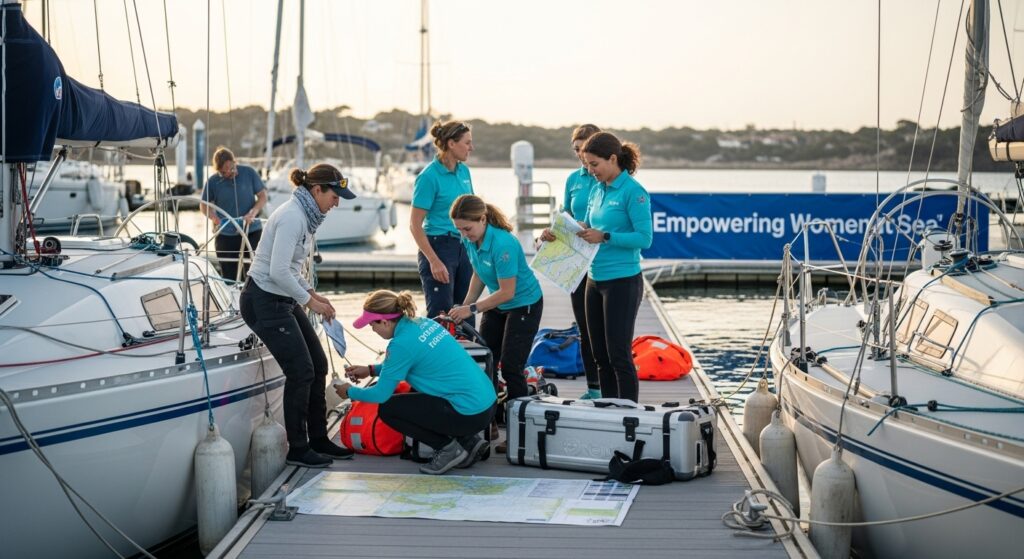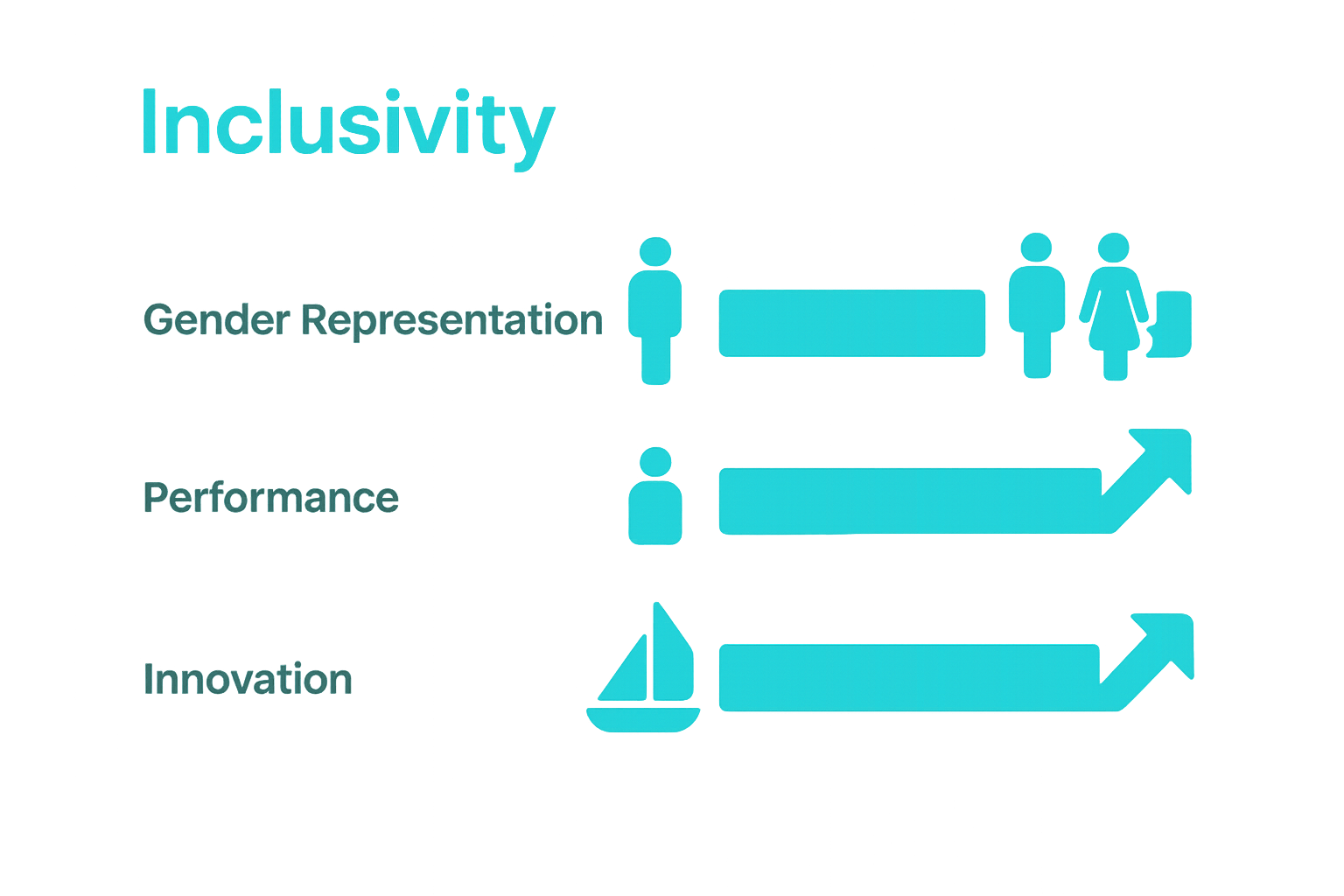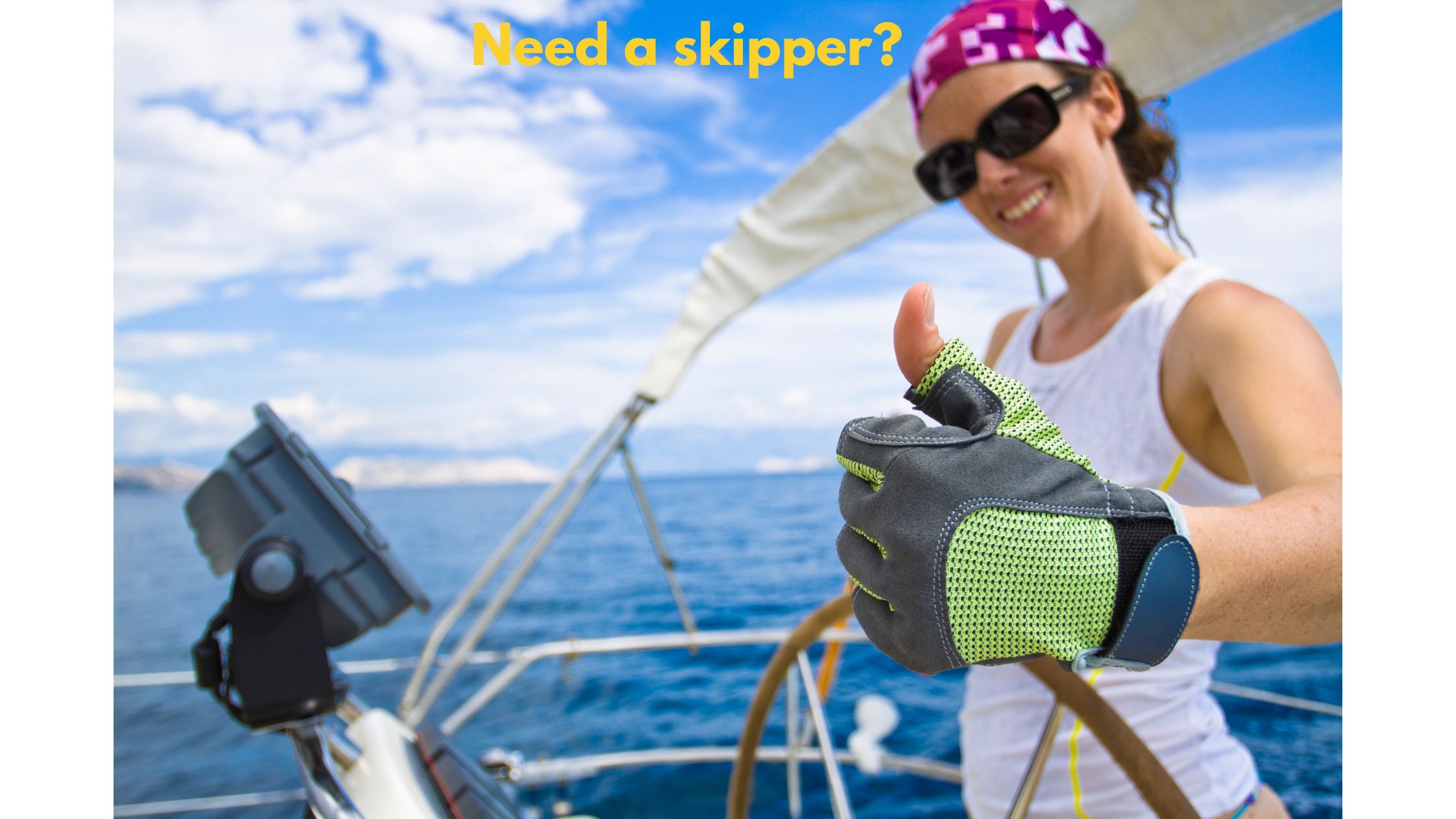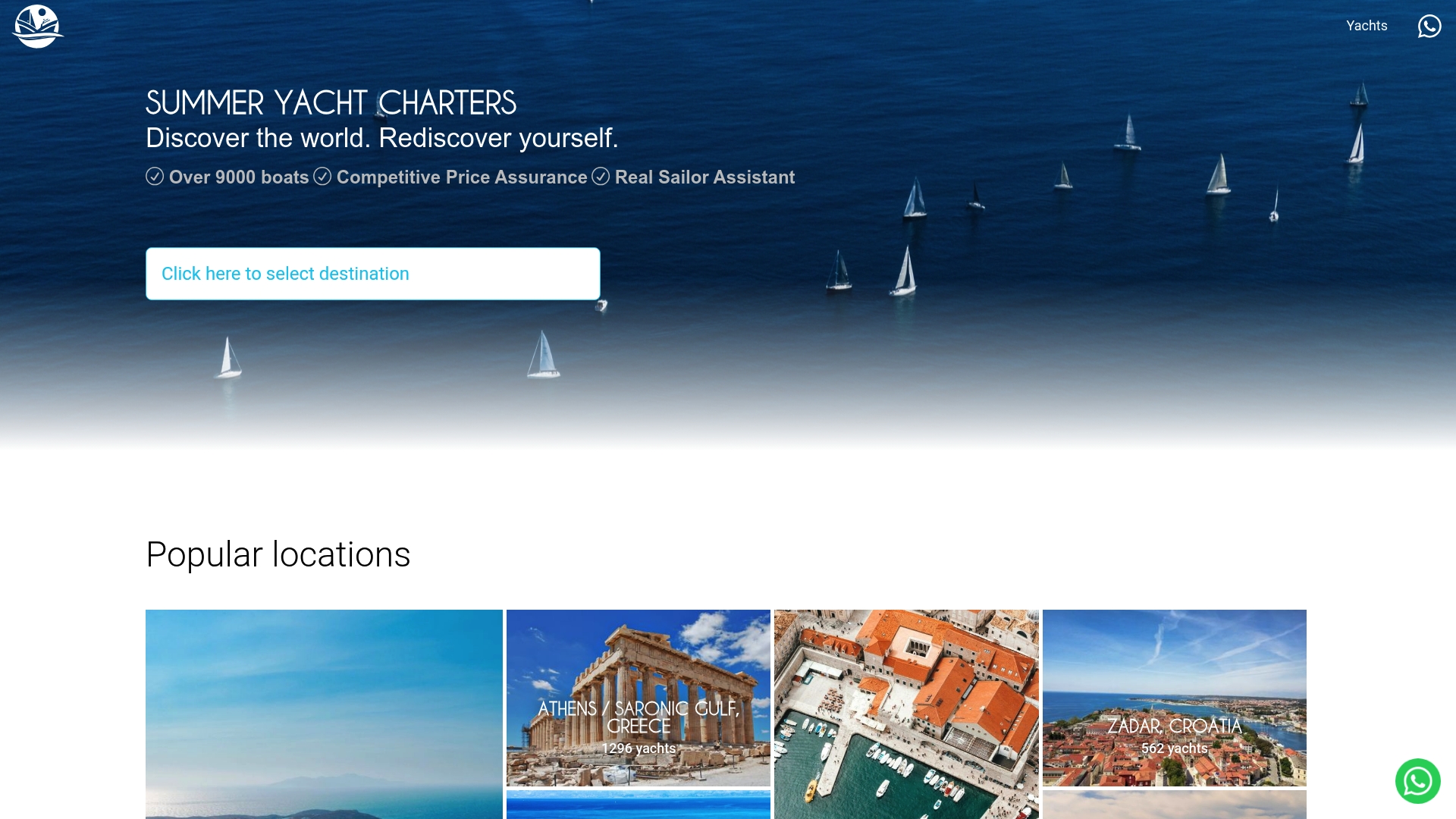Understanding Female Sailing: Empowering Women at Sea
Explore the world of female sailing, its significance, and how it empowers women in the sailing community and beyond.

Female sailors are transforming the maritime world right now. While sailing was once weighed down by rigid traditions, women are now racing ahead, breaking old barriers and making their mark on the water. Professional sailing organisations and yacht clubs are introducing more gender diversity initiatives than ever before, but the real surprise is how the biggest change isn’t only happening on the water. It is within communities, where collective support and new networks are driving a fundamental shift in what it means to be a sailor.
Table of Contents
- Defining Female Sailing: A Growing Movement
- Importance of Inclusivity in Sailing Culture
- Challenges and Opportunities for Female Sailors
- Influence of Social Media on Female Sailing
- Real-World Examples: Celebrating Female Sailing Achievements
Quick Summary
| Takeaway | Explanation |
| Female sailing challenges gender stereotypes | Women are actively breaking traditional barriers in sailing, showcasing skill and leadership. |
| Community building is essential for empowerment | Female sailors are forming networks that provide mentorship and support, fostering growth together. |
| Diversity enhances sailing performance | Inclusive sailing teams improve problem-solving and creativity, leading to better outcomes. |
| Social media amplifies female visibility | Digital platforms enable women to share experiences and build supportive networks in sailing. |
| Historical barriers still exist | Female sailors face challenges like pay disparities and limited leadership roles that must be addressed. |
Defining Female Sailing: A Growing Movement
Female sailing represents a transformative movement challenging traditional maritime spaces and redefining participation dynamics in nautical sports. This emerging trend goes beyond mere participation, representing a comprehensive cultural shift towards gender inclusivity and empowerment within sailing communities.
Breaking Traditional Maritime Barriers
Historically, sailing has been predominantly male-dominated, with women often marginalized or viewed as peripheral participants. Today, female sailors are actively dismantling these historical constraints, demonstrating exceptional skill, leadership, and technical proficiency across competitive and recreational sailing spheres.
Key characteristics of this movement include:
- Challenging gender stereotypes in maritime environments
- Developing supportive networks and mentorship programmes
- Increasing representation in professional sailing competitions
- Promoting technical training and skill development
Collective Empowerment and Community Building
According to research in the Sociology of Sport Journal, female sailing is not just about individual achievements but represents a collective effort to transform systemic barriers. Women are creating robust support networks, sharing knowledge, and collectively advocating for greater opportunities and recognition.
The movement emphasizes collaborative learning, mutual support, and creating inclusive spaces where women can develop maritime skills without experiencing gender-based discrimination. Professional sailing organizations, yacht clubs, and training institutions are increasingly recognizing the importance of gender diversity and implementing programmes to support female participation.
Future Trajectory and Global Impact
As female sailing continues to evolve, it promises significant long-term impacts on maritime culture. By challenging existing paradigms, women are not just participating in sailing but fundamentally reshaping its social and professional landscapes, inspiring future generations of maritime enthusiasts regardless of gender.
Importance of Inclusivity in Sailing Culture
Inclusivity in sailing culture represents a critical paradigm shift that transcends traditional gender boundaries, creating environments where diverse individuals can fully participate, contribute, and excel in maritime activities. This transformation goes beyond simple representation, focusing on systemic changes that dismantle historical barriers and create genuine opportunities for all sailors.
Challenging Historical Exclusionary Practices
Traditionally, sailing has been characterized by rigid hierarchical structures and exclusionary practices that inadvertently marginalised women, individuals from diverse socioeconomic backgrounds, and underrepresented communities. These systemic barriers have limited participation and innovation within maritime spaces.
Key barriers historically experienced include:
- Limited access to training resources
- Inherent gender-based discrimination
- Lack of representation in leadership roles
- Financial constraints preventing entry
- Cultural stereotypes about sailing capabilities
Economic and Performance Benefits of Diversity
Research from the International Sailing Federation demonstrates that inclusive sailing environments generate substantial performance and economic advantages. Diverse teams consistently demonstrate enhanced problem-solving capabilities, increased creativity, and more robust strategic thinking.

Inclusive sailing practices contribute to broader industry transformation, enabling:
- Enhanced team dynamics
- More comprehensive skill development
- Broader talent recruitment
- Increased innovation potential
Creating Sustainable Sailing Ecosystems
True inclusivity requires comprehensive strategies that address structural inequalities. This involves proactive recruitment, mentorship programmes, accessible training resources, and creating supportive environments that welcome sailors from all backgrounds.
By prioritizing inclusivity, sailing communities can develop more resilient, dynamic, and innovative maritime cultures that reflect the diverse talents and perspectives of global sailing enthusiasts. The future of sailing depends not just on technical skills, but on creating welcoming spaces where everyone can pursue their maritime passions without encountering systemic barriers.
Challenges and Opportunities for Female Sailors
The sailing landscape presents a complex terrain of unique challenges and emerging opportunities for female sailors, characterized by persistent systemic barriers and promising pathways for professional and personal development. Understanding these dynamics is crucial for fostering meaningful transformation within maritime environments.
To summarise the main challenges and growth opportunities discussed for female sailors, the following table presents a concise comparison of barriers and emerging pathways in professional sailing environments.
| Challenge or Opportunity | Description |
| Limited leadership opportunities | Women face restricted access to senior maritime positions |
| Pay disparities | Female sailors frequently earn less than male colleagues |
| Minimal representation in senior roles | Few women reach top decision-making or visible competitive roles |
| Institutional support and mentorship | New initiatives offer guidance and sponsorship for female sailors |
| Specialised technical training | Access to tailored education for advanced maritime skills |
| Increased visibility and networks | Participation in professional events and women-focused sailing groups |
| Roles in maritime technology & management | Emerging avenues for leadership in modern maritime disciplines |
Navigating Professional Barriers
Professional sailing remains significantly male-dominated, with women encountering multifaceted obstacles that extend beyond technical competence. These challenges encompass institutional biases, limited representation, and deeply entrenched cultural norms that have historically marginalized female participation.
Significant professional challenges include:
- Limited leadership opportunities
- Pay disparities compared to male counterparts
- Minimal representation in senior maritime roles
- Persistent gender-based discrimination
- Inadequate professional networking platforms
Emerging Opportunities and Professional Growth
According to research from the Global Maritime Forum, female sailors are increasingly creating transformative pathways within maritime industries. These opportunities are characterized by strategic skill development, collaborative networks, and progressive institutional support.
Key growth opportunities encompass:
- Specialized technical training programmes
- Targeted mentorship initiatives
- Increased visibility in competitive sailing
- Development of women-focused maritime networks
- Emerging roles in maritime technology and management
Strategies for Professional Advancement
Successful navigation of maritime careers requires proactive approaches that combine individual resilience with systemic advocacy. Female sailors must cultivate comprehensive skill sets, build robust professional networks, and continuously challenge existing institutional limitations.
By developing technical expertise, fostering supportive communities, and consistently demonstrating professional capabilities, female sailors can progressively reshape maritime cultures.
 The future of sailing depends not merely on individual achievements but on collective efforts to create genuinely inclusive, equitable maritime environments that welcome and celebrate diverse talents.
The future of sailing depends not merely on individual achievements but on collective efforts to create genuinely inclusive, equitable maritime environments that welcome and celebrate diverse talents.
Influence of Social Media on Female Sailing
Social media has fundamentally transformed how female sailors connect, learn, and share experiences, creating unprecedented opportunities for visibility, community building, and professional development within maritime spaces. This digital revolution provides powerful platforms for storytelling, skill sharing, and challenging traditional maritime narratives.
Digital Platforms as Empowerment Tools
Social media channels have become critical spaces for female sailors to document their journeys, challenge gender stereotypes, and create supportive international networks. Instagram, YouTube, and sailing-focused online communities enable direct communication and knowledge exchange that transcend geographical and institutional barriers.
Key digital empowerment strategies include:
- Sharing technical sailing skills and tutorials
- Documenting personal maritime experiences
- Creating cross-cultural sailing networks
- Challenging traditional maritime representations
- Promoting inclusive sailing narratives
Visibility and Representation Dynamics
According to research from the European Transport Research Review, visual content on social media significantly influences activity choices and perceptions. Female sailors leverage these platforms to showcase their expertise, adventures, and professional capabilities, gradually reshaping maritime cultural narratives.
Visibility impact areas include:
- Increased representation of women in maritime roles
- Inspiring younger generations of sailors
- Challenging gender-based maritime stereotypes
- Developing professional sailing portfolios
- Creating alternative career narrative models
Strategic Community and Professional Networking
Beyond personal storytelling, social media facilitates strategic professional networking. Female sailors can now connect with mentors, participate in international sailing forums, and access previously unavailable training resources. Learn more about first-time charter experiences that highlight the transformative potential of digital connectivity.
By strategically using social media, female sailors are not just sharing experiences but actively constructing inclusive maritime cultures. These digital platforms serve as powerful tools for individual empowerment and collective transformation, bridging gaps between personal passion and professional advancement in sailing communities.
Real-World Examples: Celebrating Female Sailing Achievements
Female sailors have consistently defied expectations, breaking records and challenging maritime traditions through extraordinary voyages that demonstrate exceptional skill, resilience, and pioneering spirit. These remarkable achievements not only showcase individual excellence but also inspire future generations of women to pursue maritime careers.
This table highlights significant solo and team achievements by female sailors, offering real-world examples that underscore the breadth of women’s influence in maritime pursuits.
| Achievement Type | Notable Example | Description |
| Solo circumnavigation | Krystyna Chojnowska-Liskiewicz | First woman to complete a solo sail around the world (1976-1978) |
| Fastest solo circumnavigation | Ellen MacArthur | Set the fastest solo record (2005) |
| First American nonstop solo race finish | Cole Brauer | First American woman to finish nonstop solo global race (2024) |
| Team maritime expedition | Navika Sagar Parikrama | All-women crew’s circumnavigation demonstrating collaboration |
| Competitive breakthroughs | Various female-led race teams | Women breaking barriers in professional racing events |
Groundbreaking Solo Circumnavigation Voyages
Pioneering female sailors have transformed oceanic exploration by completing solo circumnavigation journeys that challenge historical maritime narratives. These incredible expeditions represent more than personal achievements they symbolize systemic transformation within sailing cultures.
Notable solo circumnavigation achievements include:
- Krystyna Chojnowska-Liskiewicz: First woman to sail single-handedly around the world (1976-1978)
- Ellen MacArthur: Fastest solo circumnavigation record (2005)
- Cole Brauer: First American woman to complete a nonstop global solo race (2024)
Collective Maritime Expeditions and Team Achievements
According to historical maritime research, collective expeditions highlight the power of collaborative female sailing achievements. The Navika Sagar Parikrama expedition exemplifies how women can successfully navigate complex maritime challenges through teamwork and strategic planning.
Significant team sailing achievements showcase:
- Comprehensive maritime training capabilities
- Strategic navigation skills
- Collaborative problem-solving
- International representation
- Breaking institutional barriers
Professional and Competitive Sailing Breakthroughs
Competitive sailing platforms have become critical spaces for female sailors to demonstrate professional expertise and challenge gender-based limitations. Explore our yacht charter experiences that celebrate maritime diversity and individual excellence.
These real-world examples transcend individual narratives, representing a broader movement of empowerment, skill development, and systemic transformation within maritime environments. Female sailors continue to redefine expectations, proving that passion, technical expertise, and determination know no gender boundaries.
Celebrate Female Sailing Adventures with Summer Yacht Charters
For women inspired by the stories of resilience and empowerment explored in “Understanding Female Sailing: Empowering Women at Sea”, the journey does not end with knowledge. The unique challenges female sailors face, from overcoming traditional barriers to seeking inclusive sailing opportunities, are real. At Summer Yacht Charters, we believe every milestone at sea deserves recognition and support. Our Celebrating life’s moments collection is crafted for those who want their own triumphs and adventures to be truly unforgettable.

Ready to transform inspiration into reality? Choose from thousands of yachts in iconic Mediterranean destinations and craft a custom itinerary that honours your passion. Secure dedicated support and a seamless booking experience through Summer Yacht Charters. Explore the beauty of female-led journeys, whether navigating the Aegean Sea or taking on your first bareboat charter. Begin your empowering sea adventure today—the time for change and celebration is now.
Frequently Asked Questions
What is female sailing?
Female sailing refers to the growing movement of women engaging in sailing activities, challenging traditional gender barriers and promoting inclusivity in maritime sports.
What challenges do female sailors face?
Female sailors often encounter professional barriers such as limited leadership opportunities, pay disparities, and gender-based discrimination, which hinder their participation in the maritime industry.
How can female sailors find mentorship and support?
Women in sailing can seek mentorship and support through professional sailing organisations, yacht clubs, and networks specifically designed to promote female participation and training in sailing.
What are some historical achievements of female sailors?
Notable achievements include Krystyna Chojnowska-Liskiewicz being the first woman to sail solo around the world and Ellen MacArthur setting the record for the fastest solo circumnavigation, illustrating the extraordinary contributions of women in sailing.